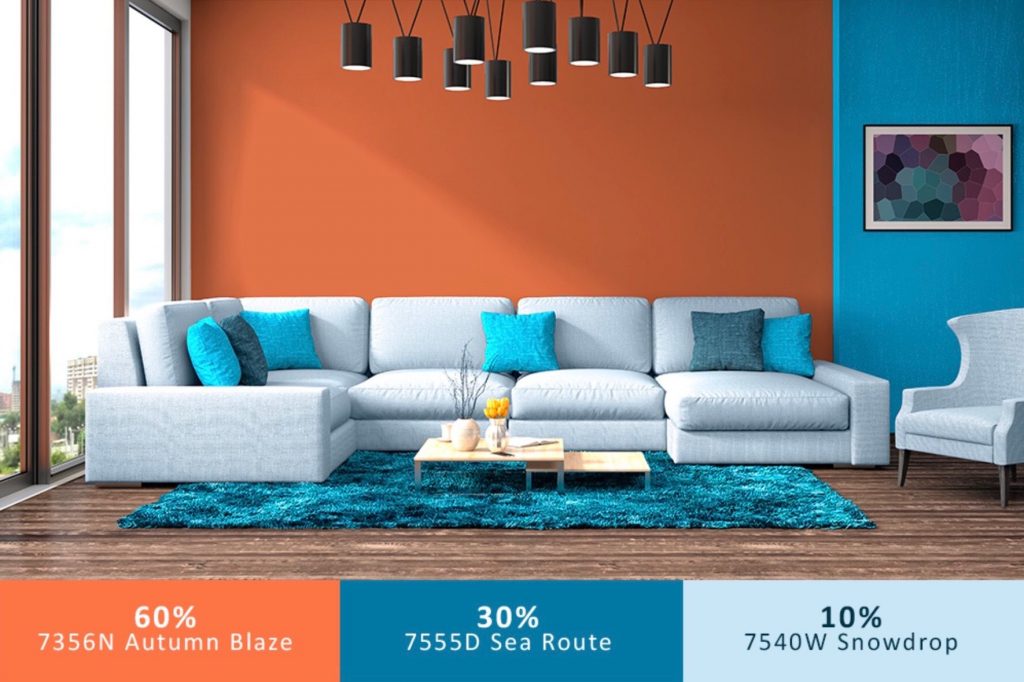Miracle Nwankwo
In recent times, colours have been used to represent people, brands and concepts, because it speaks volume about individual character and preferences. Individuals are propelled to a particular colour, that is why we all have favourite colours and why we also have brands with unique colours. Before combining colours, it is important to understand how colours relate and how they can be combined.
We do know that decorating is a form of art, and in art, colours combination also known as colour theory is vital. Therefore, understanding the science of colours so as not to commit a decoration blunder should be considered.
According to Apium Hub, the perfect colour combination is very powerful because it can influence the mood and emotions of the customers.
The same goes for the feel of a home; a good colour combination influences the ambience of the home.
“Colour is an essential tool because it has an impact on how we think and behave. Colour directs our customer’s eye where to look, what to do, and how to interpret something. It puts content into context. It helps our customers see what is most important and navigate easier. The interaction with the brand becomes much more fun and interesting.”
Although this relates to business, however, colours have a huge role in decoration even in a home.
That said, have you heard about the ’60-30-10 Rule’ in decoration? You should consider adopting it into your DIY home decoration to get a captivating and exquisite look in your home.
“The 60-30-10 rule is a classic decor rule that helps create a colour palette for space. It states that 60% of the room should be a dominant colour, 30% should be the secondary Colour or texture, and the last 10% should be an accent,” said Sara Lynn Brennan, CEO and Principal Interior Designer at Sara Lynn Brennan Interiors, North Carolina.
This rule is called the timeless decorating rule that eases the confusion of colours combination in decoration. The rule gives balance to the colours used in any space, and if you are nervous or unsure about combining colours, this concept is incredibly simple to use. You should consider using the 60-30-10 colour rule for your next room makeover. Also, approaching an expert to help guide you through the process is a better idea.
How the rule works:
Sara Lynn recommends a neutral colour palette that allows you to create a practical and curated space using pieces you love, however, she advised choosing any colours you like using the 60-30-10 rule.
The first aspect of this rule is 60%, which is the overall Colour of the room. Having read about the rule I will like to dub it the president colour. It is the Colour that gives your space a face. So when someone says “that’s is a white house,” it is because the colour white takes 60% position following the rule.
The next is 30%. According to Sara Lynn this percentage will become the secondary Colour in your space and will support the main Colour, but be different enough to give the room interest. To understand this better, see this Colour as the vice-president so it has to be half as much as your main Colour. To help create balance and calmness, try not to make the 30% override the 60%, allow each percentage to take a unique position and compliment themselves.
The last on this rule is 10% which is your fun percentage; comprising of your accent colour. What you make out of the 10% is up to you. This Colour is what determines the character of your home. You may decide to make it bolder or subtler depending on what look you want, it’s really up to you.
Specific Items/Examples for The 60-30-10 Rule by Sara Lynn:
60%
- Walls
- Accent Pieces
- Rugs
- Sofa
- Large “Foundation” Pieces
30%
- Curtains
- Painted Furniture
- Side Chairs
- Smaller “Foundation” Pieces
10%
- Throw Pillows/Patterned Fabrics
- Decorative Accessories
- Artwork
How to Choose Your 3 Colors Using the Colour Wheel.
The easiest way to combine colours without causing havoc is by using a colour scheme based on the colour wheel. For some of us selecting the three colours to work with might be the major issue and we probably need help on how to go about it. I bet you are not alone on this and employing a little help will come handy. To help you navigate through this, Sara Lynn recommends any one of these 4 options:
- The Monochromatic Colours Combination
According to Wikipedia, “Monochromatic colours are all the colours (tones, tints and shades) of a single hue.” White is added to a colour to get the tints and shades and tones are achieved by adding a darker colour like grey or black. In using the Monochromatic colour scheme, Sara Lynn says “choose only ONE colour and use lighter and darker variations of that colour in your space.” “This works best with a neutral colour such as grey, cream, white, or greige,” she adds.
- The Complimentary Colours Combination
Complementary colours are colours that are opposite each other on the colour wheel, for example, blue and orange. According to Tigercolors.com, the high contrast of complementary colours creates a vibrant look, especially when used at full saturation.
If you are going for the complimentary colours method, Sara Lynn advises that you “select TWO colours opposite each other on the colour wheel. One will always end up being a “warm” colour and the other will be a “cool” colour giving you a nice balance.”
- The Analogous Colours Combination
Analogous colours are three colours next to each other on the colour wheel. Speaking about these set of Colour, tigercolors.com says that the analogous colours “usually match well and create serene and comfortable designs.”
Using the analogous colour method is great. Meanwhile, Sara Lynn thinks that you should “select THREE colours adjacent (next) to each other on the colour wheel, having the middle colour being the more dominant colour.” “An example of this would be blue-green, green, and green-yellow; do you see how green is showing up in all three? Ahh, yes!”
- The Split Complementary Colours Combination
In this method, a base or primary Colour is used as the main Colour, while two colours opposite on the colour wheel are used as its complement. It is often said that the Split-Complementary colour schemes are very similar to the Complementary colours schemes because they both engage colours opposite each other. However, there are different ways to the Split Complementary Colours Combination, but here is what Sara Lynn has to say:
“Select the main colour, find it’s complimentary colour across from it on the colour wheel, and add in one of the colours adjacent (next) to the complementary colour.”
“An example might be, Blue as your dominant colour, then orange as your complimentary colour and red as the third colour.”
In conclusion, this rule is not a one-size-fits-all in decoration; however, various interior design experts have confirmed the beauty that emerges in a home when this rule is used. In efforts to creating negative space, adding the 60-30-10 rule to you home decoration will give you an outstanding look.
You should go for this, but until then, happy decorating!





Comments are closed.